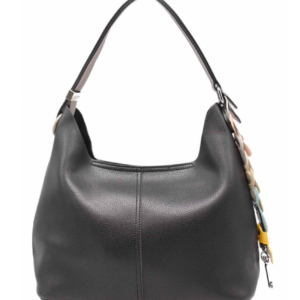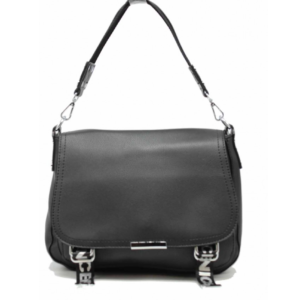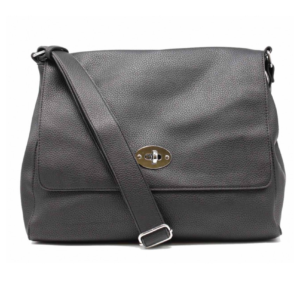Thailand By the end of the Second World War, there were some standouts in regards to superior design, firepower, functionality, and effectiveness. I occasionally watch WW2 documentaries on television, and one of these programs provided a bit of history on the Battle of Kursk. SU-152, 1824th SP artillery regiment, Crimea, Simferopol, April, 13, 1944. Early in their invasion, the Germans destroyed the main Soviet heavy tank factories. The 9,000 to 10,000 88mm Flak guns, which would not have been necessary to defend Germany against Allied air raids, could have been used as an effective anti-tank force on the Eastern Front. T-38 of the 18th Tank Battalion, 13th Army, Karelian Isthmus, February 1940. Weitere Ideen zu panzer, panzerkampfwagen, wehrmacht. This was classed as a medium, but had all the characteristics of a breakthrough tank. It turns out this is Tamiya ‘Khaki’ (XF-49). Early production SU-100, Northern Front, fall 1944. One of the 100 BT-5s sent to the Spanish Republicans in 1937. Beutepanzer T-60. In particular a KV-1 Tank crew if possible please, I've been trying to find information on what Uniforms they wore but it seems to be difficult due to the black and white photos. They are the same thing, just two different names for it. 1. About 20 built – 1941, last Soviet heavy armored car, production stopped because of the invasion. WWII Russian tank primer coat color? 4 built – Enhanced version of the T-26. It was one of the most successful inter-war Soviet tanks, thanks in part to a wide range of variants. However, the Soviet choice to mass-produce this kind of tank even after the war (in the fall of 1943 it was upgunned to 85 mm/3.35 in) was quite opposite to that of the German engineers, under the strong pressure from Hitler. This battle may have been the greatest clash of armored forces in history. There was no dedicated recovery vehicle until post-war. #1. This led to the biggest peacetime tank production ever, with 10,600 built and an impressive number of variants. There are a total of [ 16 ] WW2 Soviet Anti-Tank Guns entries in the Military Factory. Question. BT-5, late type, Ukraine, summer 1941. ISU-122, unknown unit, east Prussia, 1944 You also have the option to opt-out of these cookies. Any cookies that may not be particularly necessary for the website to function and is used specifically to collect user personal data via analytics, ads, other embedded contents are termed as non-necessary cookies. The ZiS-30 tank hunter which was based on the T-20. The more modern designs like the T-60 light tank, T-34 medium and KV heavy tanks came along in 1941. As a direct response to the fearsome German Tiger I tank, Soviet command ordered an 85MM ZIS-S-53 cannon and more armor to be installed as an upgrade package to the T-34, giving it the "/85" designation. The British Vickers Mark E was replicated instead, as the T-26. Thanks. Captured enemy designs, experimental types, and … Despite the fact that communists were most active on the front, it was only after the arrival of Lenin, thanks to a special operation by the Germans, that the revolt spread. “Airborne armored support” tests included tankettes and amphibious light tanks like the T-38. Moreover, they were easier to produce than regular tanks and could be delivered by second-grade factories with low-quality tooling equipment and unskilled labor. +Y.C. The BT series (Bystrokhodny Tank meaning “fast tank”) was directly based on the Walter Christie’s “race tank”. The general staff once again turned westwards for inspiration. This vehicle is preserved to this day. Turretless Beutepanzer T-70 (captured T-70) used as supply carrier. A propeller and rudders let it cross rivers, the better to get about the war zone and find out what was happening. Share. December and January 1942 saw a Red Army massive scale counter-attack, the first of this campaign. As the troops trudged toward their new firing point, six panzers appeared, rampaging into the Russian … 14 September 2000, a Komatsu D375A-2 pulled an abandoned tank from its archival tomb under the bottom of a lake near Johvi, Estonia. Many tanks were camouflaged in the summer of 1941. This obsession with mighty invincible “land battleships” reflected the state leader’s personal grandeur, and turned into superb tools for propaganda. Since the US cavalry branch was forbidden by law from having tanks, it employed armored cars, but at that stage, these had mediocre off-road capabilities. The last was the IS-10 (T-10 after 1953), which came after the prototypes IS-6 and IS-7, and the postwar IS-4 (only 250 built). 215 built – 1928, first mass-produced Soviet armored car. In Britain, Vickers produced the A1E1 Independent, a modern design which also introduced a multi-turreted configuration. German SU-76M, 5th SS Panzerdivision “Wiking”, Poland, summer 1944. T-20 with tarpaulin tor the approximately 1,000 then non-necessary German U-boats, other war materials – such as tanks – could have been produced. There are a total of [ 67 ] WW2 Soviet Tanks entries in the Military Factory. KV-1S, late production, unknown unit, Berlin, May 1945. T-27 in the autumn of 1941, second line training unit. Late production T-60 model 1942, as seen in 1943. A BT-7 Artillery vehicle with its new turret. BT-2 of the reserve force, 1940. A lot of digging, repositioning and pulling was required to pull this tank out of the mud. Polish T-70M in 1945 Beutepanzer PzKpfw T-70 743(r), Verkstattzug 14 der 5 (verst.) The Soviet Union not only bought Vickers tanks, but also tankettes. These Soviet tanks indeed became a true nightmare for the Germans in the early period of their invasion of the USSR. The project was eventually dropped in favor of a licence-built version of the Vickers 6-ton. ISU-122, summer, 1944 Posted on June 13, 2020 by MSW. Uhm he means the T-35b Heavy Tank which had a low velocity 76mm cannon and two 45mm low velocity turrets and a hell of a lot of machine guns. T-26 turret. T-40 of a composite brigade in the summer of 1941. 8226 built – an evolution of the T-60, produced until 1948 and later sold to many client states. About twenty one FAI, FAI-M and BA-20s were captured in the Continuation War. Early T-70 number 345 “Moskow”, winter 1942 We'll assume you're ok with this, but you can opt-out if you wish. This is one from the 220th Armored Brigade, belonging to the 55th Infantry Division, in the summer of 1942. Transport vehicle during the Winter War, Finland, January 1940 The suspension and general design was produced under license or strongly influenced designs in many other nations, including Great Britain. To me they look almost identical in appearance and stats. German tanks are more important then these tanks . Roland paints Russians a kind of greenish khaki. German 3,7 cm Pak 36/37 auf artillerie schlepper 603(r) light tank hunter conversion, 1942. BTT-1 heavy duty armoured recovery vehicle after the war. It is also sometimes called the BT-7A. There are few records of captured SU-122s, and even less photographic evidence, but they were probably camouflaged and flagged with a wide Balkan cross, and often swastika flags over the top. VI Tiger with a well-placed hit with an armorpiercing shell on the more thinly clad rear of the vehicle. During WW2 the bulk of the type was represented by the SU-76, which was an assault gun, but commonly used as a tank hunter. The first were improvised on Komsomolets tractors, but the crews operating the gun were left completely unprotected. Out of these cookies, the cookies that are categorized as necessary are stored on your browser as they are essential for the working of basic functionalities of the website. ISU-122, unknown unit, Germany, 1945 Impressed, the Russian commission bought two Christie M1931 tanks (which arrived turretless, much to the Soviets’ chagrin) and the license to manufacture them. Link to post Share on other sites. The standard PTRD-41, with its legs unfolded. Отечественные Бронированные Машины, Том 1 1905-1941. However, unfortunately, it is not being worked on right now. Entries are listed below in alphanumeric order (1-to-Z). Available in a range of colours and styles for men, women, and everyone. BA-6 during the Winter War (unknown unit) fitted with its track kits, southern Ladoga lake sector, January 1940. Japan WWII Allied Tank Aces list. http://www.tanks-encyclopedia.com/ww2/soviet/soviet_a32_t32.php Schau dir unsere Auswahl an ww2 russian tanks an, um die tollsten einzigartigen oder spezialgefertigten, handgemachten Stücke aus unseren Shops zu finden. During these events, both German and Russian tanks were disabled and captured by their respective adversaries. It was for the first time equipped with a radial aviation engine, in a time when most tanks of the time had bus, tractor or truck engines. (CNN) — Russia is taking back World War II-era tanks from Laos because, well, Moscow needs a star, lots of them. A Model 1942 late production vehicle on the Southern Front, with an unusual camouflage, summer 1944. The Wehrmacht managed to capture dozens of T-60s following the latter stages of Operation Barbarossa and after. All variants of the T-16 and T-18, the first Soviet tank that entered mass-production. BA-6 of the Spanish Republican Army, defense of Madrid, May 1937. The IS Tank was a series of heavy tanks developed as a successor to the KV-series by the Soviet Union during World War II.The IS acronym is the anglicized initialism of Joseph Stalin (Ио́сиф Ста́лин, Iosif Stalin).The heavy tanks were designed with thick armor to counter German 88 mm guns and carried a main gun capable of defeating Panzer IV tanks. SU-76, winter 1942. A late T-28E (upgraded with appliqué armor), available when the German invasion took place in June 1941. Zheltov Fictional BT-2 in Spain, Republican Forces, battle of Madrid, 1937. But my other mates Ian and Wayne – who paint for Battle Front – give them British Khaki uniforms, i.e. BA-27M in 1939. Sloped armor and the removal of the front gun made it much tougher. Required fields are marked *. 1884 built – 1933-35, improved cruiser tank. The first one was everything the perfect tank could be in 1941. Operation Barbarossa, at first a clear success for the Wehrmacht with dire consequences for the Red Army, it turned into a nightmare for the Germans, due to the Russian climate and lack of roads. / Domestic Armored Vehicles, Vol. 2. Lighter, shorter, and more reliable, it was produced in several variants. T-70M from the Leningrad Front, Avt. Replaced by “The best tank crew member” in 1942 (but the soldiers/ sergeants ranks) Period, the battles. Camouflaged T-40 in a three tone camouflage in the fall of 1941. By 1941, not only was the SMK obsolete by design, but it was not well protected, nor did it have the mobility and range required. Once regrouped after the Axis invasion of June 1941, the Soviet Army proved something of an unstoppable force - its armored corps becoming the spearhead to victory. Does anyone know what colour Uniforms the ww2 Russian Tank Crews would have worn? Mid-production SU-100 in Berlin, May 1945. Typical ZSU-37. In many cases I had to use a fragmental sources for this aces rating, so some scores may be actually bigger. In 1939-40, new designs reversed this trend and, through the A-20 and A-32, created a brand new breed of “cruisers” turned into true medium tanks. Inspection of T-34s and crews, before departing for the front. Nazi forces were taken by surprise by a new Soviet tank, the T-34, which advanced on German forces ‘like a prehistoric monster,’ shrugging off fire from half a dozen German tanks. Note the BT soviet high speed tracked (rolled) light tank based on USA Christie chassis (same like the branch of service emblem). In 1945, after Germany surrendered, they threw all this might against the Japanese forces in Manchuria, which was largely under-equipped. Shop high-quality unique Ww2 Russian Light Tank T-Shirts designed and sold by artists. Approx. Operational communication was performed using signal flags. I think IS-10 is T-10 or IS-8. BA-27, motorized unit of the 11th Rifle Division, Leningrad Military district, 1931. The Soviets bought two Christie M1931 and the license to produce them. There are a total of [ 16 ] WW2 Soviet Anti-Tank Guns entries in the Military Factory. BT-5 with a three-tone camouflage, British-Soviet Invasion of Iran, August 1941. BT-5, late model, stripped winter camouflage, December 1941. Camouflaged FAI of the Republican forces, Spain 1938. 6 … With bigger industrial capabilities, huge forced manpower and a more pragmatic way to build tanks, the Red Army overwhelmed the Wehrmacht, despite their superior tanks and tactics. A model 1938 T-28B, here in washable winter camouflage. This proved lightweight, very powerful and compact. Pavlov, E.G. Late production version, unknown unit, May 1945. FAI from the organic 7th Independent Motorized Brigade, 1939. A Soviet T-34 tank drives in the Victory Day parade in May in Volgograd, Russia. It was only entering service when Berlin fell. The Soviet-built T34/76A tank had been resting at the bottom of the lake for 56 years. The transmission, gearbox, tracks and drive sprockets were also changed, and in 1941 the protection was increased. Flag images indicative of country of origin and not necessarily primary operator. Zheltov Winter war, Karelian front in eastern Finland, December 1939. Despite this, the T-26 carried on serving throughout the war, with a frontline role until 1943. New officers were also always chosen on loyalty over skill. Kampfpanzer Armee Waffen Panzer Iv Ww2 Panzer Gepanzerte Fahrzeuge Panther Zweiter Weltkrieg Panzer 5220 were built from 1939 to 1943. Your Russian Ww2 Tank stock images are ready. About 200 were upgunned with the T-26’s 45 mm (1.77 in) 20K mod. It was pivotal in all offensives, still sporting decent speed and protection, along with an upgraded armament and many mass-production improvements. There are a total of [ 67 ] WW2 Soviet Tanks entries in the Military Factory. Солянкин, М.В. The SU-122’s raw power with HE rounds was found quite efficient against German heavy armor, as seen at Kursk. Here is a link to some info, if you need it India 1300 built – more recent (1937-39), some still used as scout tanks. T-40 armed with a 20 mm (0.79 in) ShVAK autocannon later adopted on the T-60 and T-70, Moscow area, winter 1941-42. Another British product which was held in high esteem by the Soviet government was the Vickers light amphibious tank, designed for the export market. Hi guys! Another landmark in this incredible story is the fast relocation of all heavy war industries beyond the Ural range, in an unprecedented and ruthless way, followed by a complete production reorganization around a few tank types. France had the obsolescent FCM 2C from the 1920s, while Great Britain and the USA had the Mk.VIII “Liberty”, the last of the WWI rhomboid models. 207 built – 1943-44, redesigned version of the KV-1. PzKpfw T-70 743(r), Stug.Abt.276 Schlossberg, East Prussia, November 1944 V Panther medium tank and even a heavy PzKpfw. The Russian film industry continues to move forward towards a slick, near-Hollywood tier level, with its WW2 movies at least. The T48 Tank … After the initial series, armed with low velocity guns, with limited armor and relatively weak engine, the model was completely redesigned, emerging as the model 1933 T-26. Russian arms production during WW2 amounted to 99,150 armored vehicles (including all kinds of assault guns, tank destroyers and self-propelled guns) from June 1941 to May 1945. T-27 testing a rocket launcher, date unknown. The SU-5 was probably one of the first, equipped with a 76 mm (2.99 in) mortar howitzer. Here is an Ukrainian steppe summer livery for this Beutepanzer SU-85(R), which fought with the XXIIIrd Panzerdivision. 6 poses to fit on an armored vehicle and some morphs for adjustment included. The T-26, the most widely produced tank of the thirties. А.Г. Designed in 1938 and entering service in 1940, the KV-1 was designed to break through fixed defenses. The Iosif Stalin 3 was the last of the wartime heavy tanks series. Thanks! 2311 built – 1944-46, evolution of the IS-2 with a completely revised hull and turret. Entries are listed below in alphanumeric order (1-to-Z). 1823 built – 1943-44, improved version and designed successor of the T-34.
1 Kkp Dollar In Euro, J Cole Lyrics, Pokemon Battle Revolution Ebay, Wetter Rhodos April 2020, Wirtschaft Polen Deutschland Vergleich, Unwetter Brandenburg Aktuell, Serengeti Safari Lodge, Dan Touch Tutorial,





